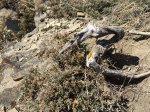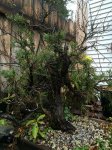Tycoss
Chumono
 Does anyone on this forum have any experience collecting or growing j. Horizontalis from semi arid areas. I live in the prairies if southern Alberta, and have seen a lot of small, weathered juniper horozontalis in uncultivated areas. I want to know if anyone has collected this species or if these are even worth attempting. I have collected wild conifers before, but never from such a dry, sandy environment. I could also air layer these, but would prefer to move them with their original roots.
Does anyone on this forum have any experience collecting or growing j. Horizontalis from semi arid areas. I live in the prairies if southern Alberta, and have seen a lot of small, weathered juniper horozontalis in uncultivated areas. I want to know if anyone has collected this species or if these are even worth attempting. I have collected wild conifers before, but never from such a dry, sandy environment. I could also air layer these, but would prefer to move them with their original roots.









